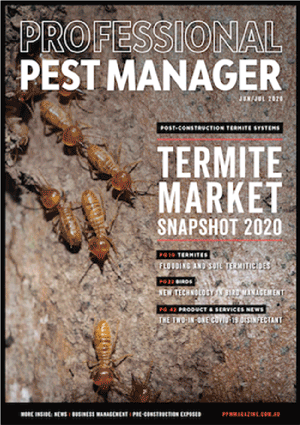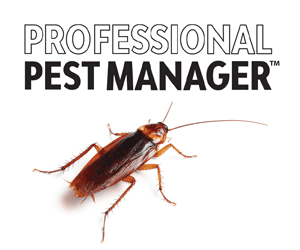Australia’s growing deer population is a cause for concern not only in rural areas, but semi-urban locations too. Here is everything pest managers need to know about feral deer.
“Feral deer are probably Australia’s worst emerging pest problem” according to the Invasive Species Council. It’s easy to see why they are concerned; feral deer numbers were estimated to be approaching two million in 2022, from only 50,000 in 1980 and 200,000 in 2002. Deer populations are established and growing rapidly.
Feral deer damage to communities and primary producers was estimated at $91 million a year in 2023 and in Victoria alone, the costs to the economy over the next 30 years is likely to be between $1.5-2.2 billion. Feral deer are not just a rural issue. As their populations have expanded they have become an increasing problem in urban and semi-urban areas, too.
Feral deer basics
Six species of feral deer are present in Australia:
- Fallow (Cervus dama, main picture above)
- Red/wapiti (Cervus elaphus)
- Hog (Cervus porcinus)
- Chital/Axis/Spotted (Cervus axis)
- Timor/rusa (Cervus timorensis)
- Sambar (Cervus unicolor)
Largest pest deer: Up to 1.4 m at the shoulder, weighs 300 kg (sambar deer)
Smallest pest deer: Up to 0.6 m at the shoulder, weighs 30 kg (hog deer)
Reproductive rate: Temperate species tend to produce one offspring a year, sub-tropical/ tropical species can breed year-round. Gestation period is around eight months
Life span: Depends on species but 10-20+ years
Diet: Herbivore
General behaviour: Herding behaviour depends on the species and sex, but they can form herds of 30-100 individuals, which is when they can cause significant damage.
How did deer become a problem?
Deer were originally brought to Australia by colonists in the 1800s for hunting and farming. So, although there have effectively been feral deer from this time, the numbers were relatively low and somewhat kept in check with hunting. However, after the venison industry fell into decline in the 1980s, with farmed deer released, escaped or relocated for hunting, the deer population started to increase exponentially. Population growth is not uniform – it depends on the species concerned and the location (environment). But once a local population reaches a critical density, growth and expansion can be rapid. Under ideal conditions, without any control measures, deer populations can increase by 34-50% per year.
Where are the feral deer in Australia?
Feral deer are a problem in the southern and eastern states of Australia. In NSW they are present along much of the east coast, and across the dividing range into agricultural areas. All but the hog deer are present, with fallow deer being the major pest species.
Feral deer are found in about a quarter of Victoria, with sambar, red, fallow and hog deer present. Sambar deer is the dominant species and is found through much of eastern Victoria.
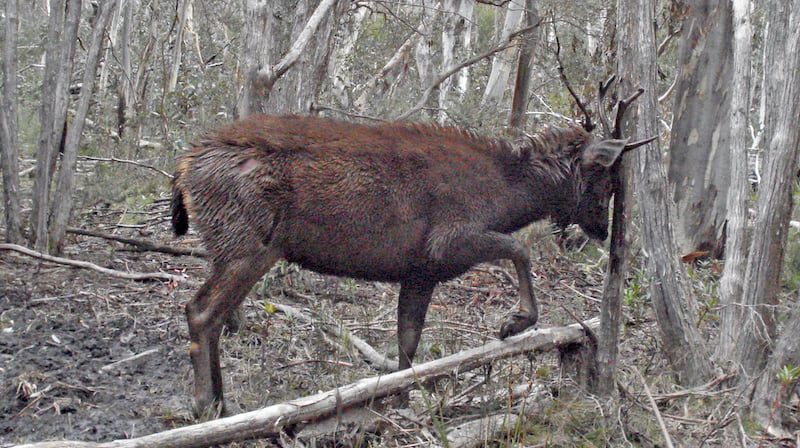
In South Australia the deer populations are currently restricted to more temperate areas, particularly the Limestone Coast, Hills and Fleurieu areas.
In Tasmania, where the issue is with fallow deer, populations are larger in the midlands with a presence across northern, eastern and southern areas. Only the west and southwest of Tasmania is deer free. Currently deer are present in around 30% of Tasmania’s land area, with modelling predicting that the deer could establish in up to 56% of Tasmania.
In Queensland, deer are a problem particularly in southeast Queensland, where red, rusa, fallow and chital deer are present.
Although the six species of deer have very similar negative impacts on agriculture and the environment, they are each adapted to different environmental conditions. Fallow and red deer are better suited to the more temperate areas of Australia, with the chital, hog, sambar and rusa deer more suited to the tropical and sub-tropical areas. However, they are very adaptable, and modelling suggests one or more deer species is capable of occupying many areas of Australia, including the interior.
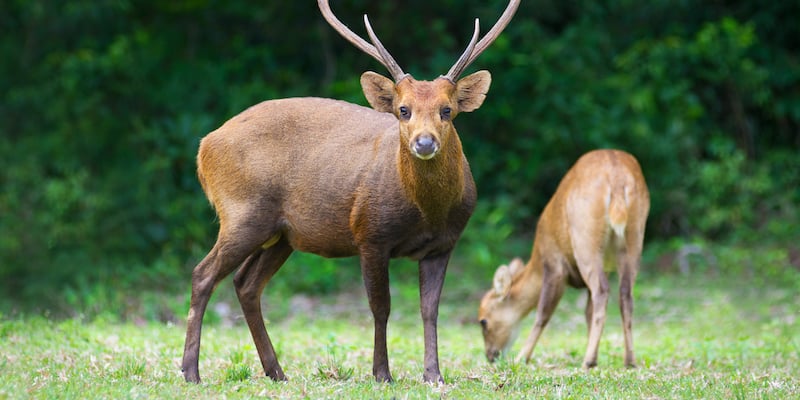
What damage do feral deer cause?
Deer have a major impact in rural areas, particularly on the agriculture and forestry industries. Deer damage crops and forestry samples, as well as fences and infrastructure. They also have indirect impacts on livestock. They compete with livestock for pasture – deer can eat between 1.5-2.3 times more pasture than sheep and also carry diseases and parasites that can infect livestock.
Feral deer can also cause significant environmental damage. They cause direct damage to trees through ringbarking and other plants through trampling. As herbivores they are in direct competition with native herbivores such as kangaroos and feeding on new growth in bushfire areas has a significant impact on habitat recovery. They can cause erosion issues along riverbanks and in sensitive areas through general movement and also creating wallows. They also facilitate the spread of invasive weeds and diseases on their fur and hooves.
Their population density has now reached high levels in some areas, so that they are now spreading into semi-rural and indeed some suburban areas. Not only do they cause damage to gardens, parks and playing fields, they can cause significant vehicle accidents. During mating seasons, when the stags become aggressive, this also poses a direct threat to people and pets.
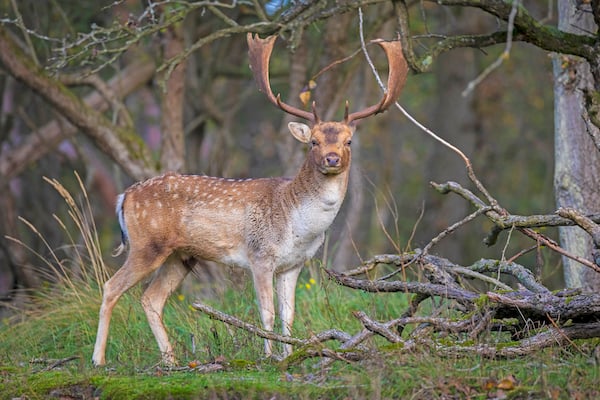
Are deer protected or a pest?
Perhaps the key issue in managing the feral deer problem is that they are classified differently in each state – are they a pest or game protected species? In New South Wales, Queensland, South Australia, Western Australia and the Northern Territory, they are classified as a pest. Land managers are responsible for controlling deer on their property. Recreational hunting is permitted on private land in these states, with land manager approval, although the deer must not be actively managed for hunting purposes. Hunting is also allowed on some public land in New South Wales.
However, in Tasmania and Victoria the deer does not have pest status, but rather game status, which is a regulatory framework to allow recreational hunting and harvest of feral deer. This means a permit is required to cull deer on private land (if deer are causing damage to property or farming/forestry activities). This creates issues in wide-scale management when neighbouring property managers have different objectives. Feral deer can still be culled in Tasmanian and Victorian national parks.
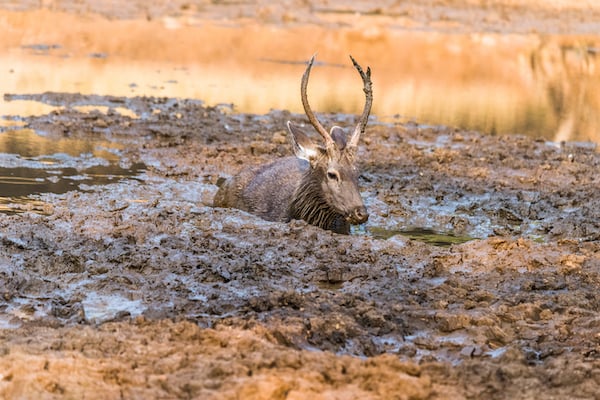
pictured)
How are feral deer controlled?
The control strategy for feral deer is less dependent on the species and more dependent on the size of the local populations. The National Feral Deer Action Plan 2023- 28 has designated three types of management zone:
- Zone 1: Asset Protection Zone – to reduce impacts of large deer populations
- Zone 2: Containment Buffer Zone – to stop the establishment of new large populations
- Zone 3: No-deer Zone – areas that are to be kept deer free by eradicating small populations and preventing further incursions.
Three control methods are used for deer management: culling by shooting (aerial or ground), trapping and exclusion fencing. The choice of management tool depends on the species, terrain and behaviour and must follow animal welfare standards. Shooting must be carried out using suitable equipment and humane techniques with the appropriate licences and permits in place.
Two new control techniques have the potential to improve the performance of management programs. Firstly, the use of thermal imaging cameras from planes, drones and on the ground can assist in identifying populations in densely vegetated areas and allow individuals to be located and culled far quicker. Secondly, the use of baits as a control option needs to be pursued. Baits are used for a range of other vertebrate pests – pigs, rabbits, dogs and foxes – but there is no registered deer bait in Australia.
The reason that the feral deer problem is expanding (apart from the pest status issue in Victoria and Tasmania) is that the current control tools are not being used intensively enough across all affected areas. It is estimated that 35-50% of the population needs to be removed annually to reduce ongoing impacts. Slow detection or reporting of a new incursion, which allows populations to become established, is also an issue. The National Feral Deer Management Plan aims to provide the basis for a coordinated and strategic approach to feral deer management.
What can professional pest managers do?
For pest managers wanting to get involved in deer management, apart from obtaining the necessary licences and permits, they should familiarise themselves with three key National Standard Operating Procedures relating to deer management: ‘Aerial Shooting of Feral and Wild Deer’, ‘Ground Shooting for Feral and Wild Deer’, and ‘Trapping of Feral and Wild Deer’.

